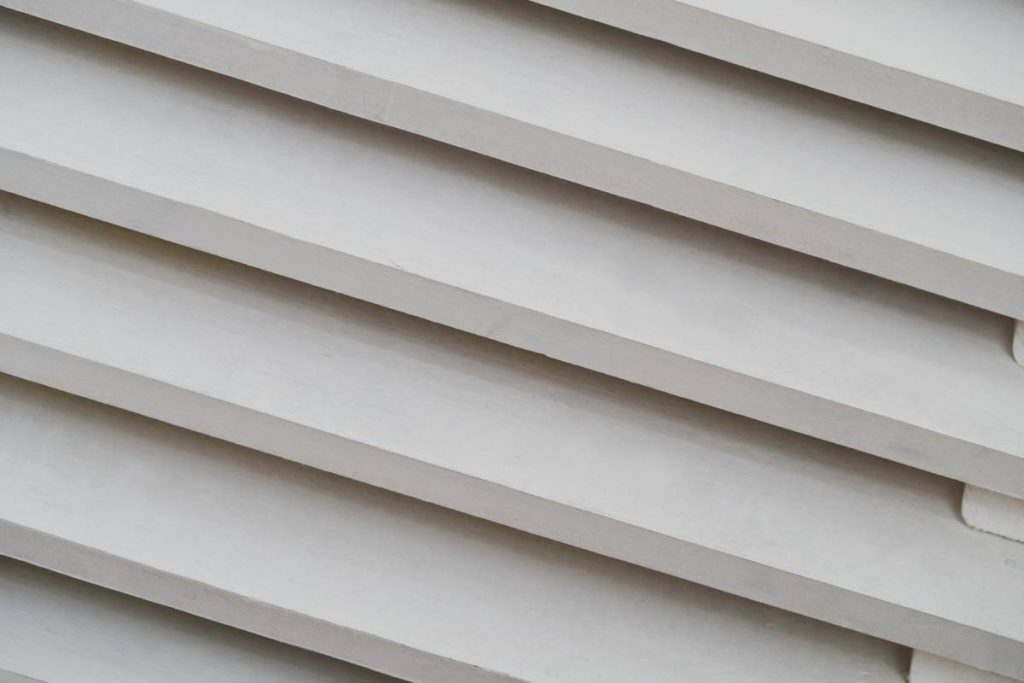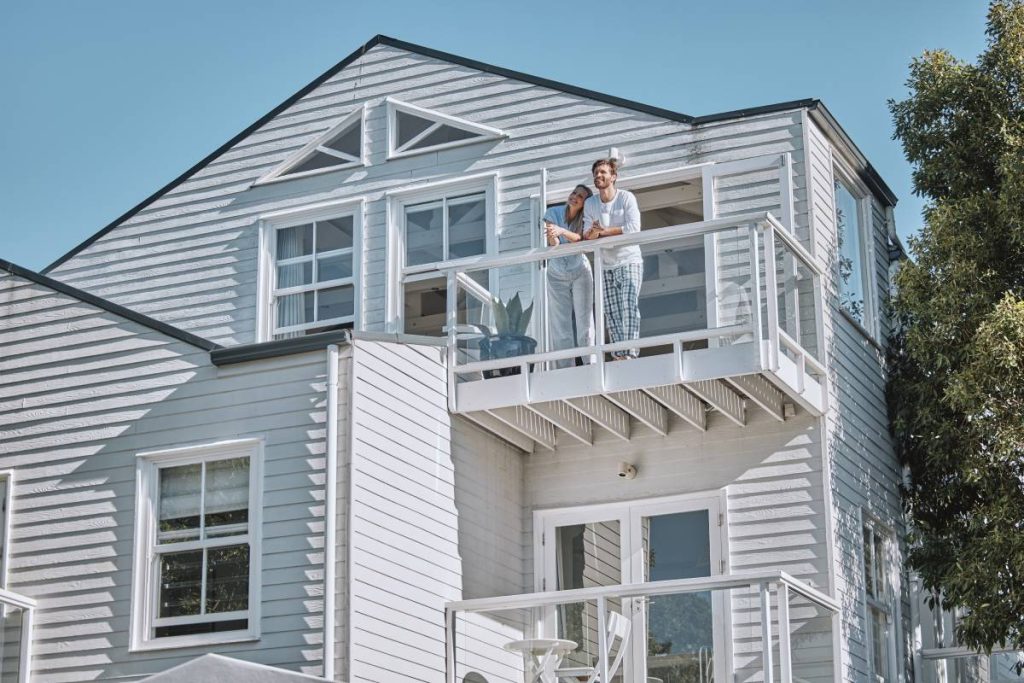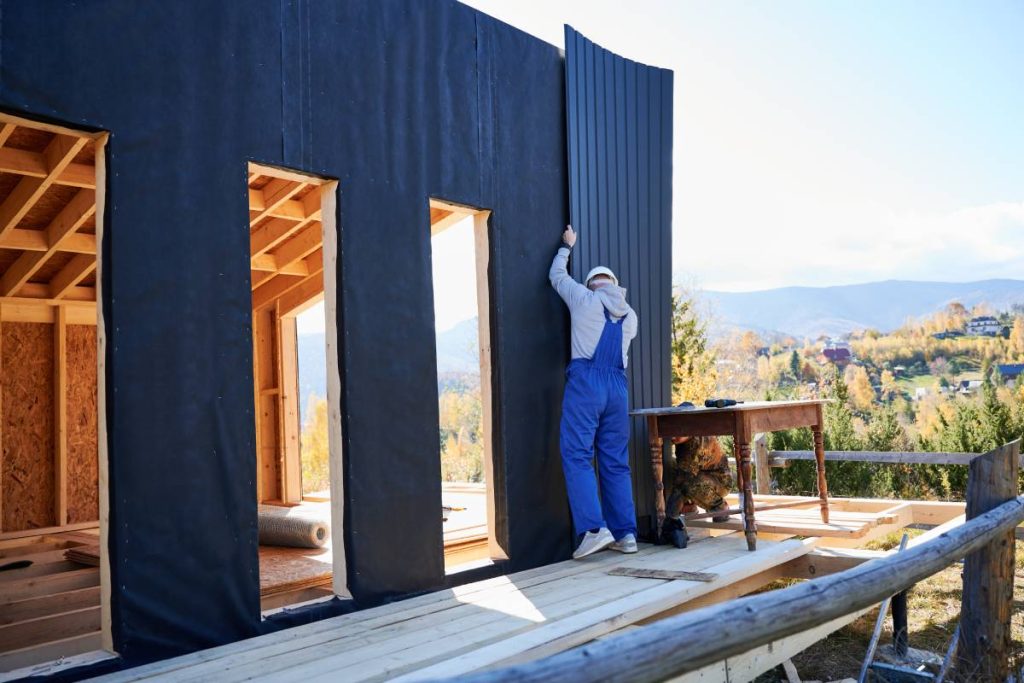Vinyl cladding stands out as a top contender among cladding materials for its affordability, resilience, and visual appeal. No longer relegated to the bottom of the options list, vinyl has become a leading choice in Australia for wall cladding and siding replacement projects.
If you’re thinking of vinyl cladding for your exterior design, you need to read this.
What is vinyl cladding?
Vinyl cladding is a type of exterior siding material used to cover and protect the exterior walls of buildings, typically houses. It is made from polyvinyl chloride (PVC) resin and is designed to mimic the look of traditional materials like wood or stone while offering durability, low maintenance, and weather resistance.
Vinyl cladding is available in various colours, textures, and styles, making it a popular choice for homeowners seeking an affordable and attractive siding option. It’s easy to install and typically requires minimal upkeep, such as occasional cleaning with soap and water.

Is vinyl cladding safe?
Vinyl cladding is generally considered safe when installed and maintained properly. However, like any building material, there are some considerations to keep in mind:
- Fire Safety: While vinyl itself is not highly flammable, it can melt or burn when exposed to high temperatures. However, many vinyl cladding products are treated with fire-retardant additives to improve their fire resistance.
- Chemical Emissions: During manufacturing, vinyl cladding can release small amounts of volatile organic compounds (VOCs), which may contribute to indoor air pollution. However, these emissions typically dissipate over time, especially in well-ventilated spaces.
- Environmental Impact: The production and disposal of vinyl cladding can have environmental implications. PVC, the main component of vinyl, is derived from fossil fuels, and its manufacture involves energy-intensive processes. Additionally, vinyl is not biodegradable and can persist in the environment for a long time if not properly recycled.
- Maintenance: While vinyl cladding itself is generally low-maintenance, improper installation or neglect can lead to issues such as water infiltration, mould growth, or structural damage. Regular inspection and maintenance can help prevent these problems.
How long does vinyl cladding last?
The lifespan of vinyl cladding can vary depending on factors such as quality of materials, installation, maintenance, and environmental conditions. However, high-quality vinyl cladding that is properly installed and well-maintained can last anywhere from 20 to 40 years or more.
Some manufacturers offer warranties on their vinyl cladding products, typically ranging from 20 to 30 years or more, which can provide an indication of expected longevity. Proper maintenance, such as regular cleaning and inspections, can help extend the lifespan of vinyl cladding by preventing issues like mould growth, colour fading, or structural damage.

Additionally, advancements in manufacturing processes and materials may contribute to improved durability and longevity of vinyl cladding over time. It’s essential for homeowners to choose reputable manufacturers and contractors and follow recommended maintenance practices to ensure the longest possible lifespan for their vinyl cladding.
Painting can also help keep moisture out, but it’s not a cure-all. It’s important to inspect your cladding yearly for signs of wear, such as warped or cracked boards, bubbles, holes, or rot. Minor damage can usually be fixed by replacing affected boards, but if the damage is severe or the siding is worn out after decades, it’s time to consider replacing it.
Signs it’s time to replace vinyl cladding
- Rot: While vinyl siding itself doesn’t rot, cracks or gaps can allow water to reach the wood underneath, leading to rot. Look out for mould, warped boards, cracked panels, peeling paint indoors, or loose exterior boards.
- Holes: Vinyl siding is durable but can still be damaged by pests. Holes may indicate insect or rodent activity. Replace damaged boards and seal holes promptly.
- Fading: Vinyl siding colours can fade over time due to weather exposure. Significant fading may suggest the siding is nearing the end of its lifespan.
- Warped or Broken Boards: Damage from weather events like high winds or hail can cause individual boards to warp or break. While a few can be replaced easily, widespread damage may warrant full replacement.
- Increased Utility Bills: Damaged or worn siding can reduce energy efficiency, leading to higher heating and cooling costs. If you notice a spike in your bills, it’s time to address the siding to restore efficiency.
How Expensive is Vinyl Cladding?
Cladding prices per square meter, or sometimes per linear meter, can vary significantly due to the wide range of cladding materials on the market. Even within the same material type, such as timber, you’ll find options at different price points.
For instance, in a timber cladding cost comparison, you might pay between $3.25 and $6.25 per linear meter for tight knot pine, or $8.30 per linear meter for Spotted Gum.
Weatherboard cladding prices can range from $3.20 for a linear meter of baltic square edge to $28.75 for a 4.2-meter length of smooth HardiePlank.

Metal cladding tends to be pricier compared to timber. Basic aluminium sheets may cost around $14.00 per meter, while corrugated cladding can go up to $30 per square meter.
Vinyl, also known as uPVC, is a budget-friendly choice for cladding. The price ranges from $30 to $100 per square meter, varying based on the specific type you choose. While it might be pricier compared to certain alternatives, vinyl boasts advantages such as no need for painting and minimal upkeep.
Available in diverse colours and finishes, vinyl cladding offers options like wood grain or smooth surfaces. It’s resistant to UV rays and flames, and it’s straightforward to maintain, often accompanied by warranties lasting at least 10 to 20 years.
Installation costs also vary, ranging from approximately $55 to $80 per hour, depending on the professional. Some businesses may charge installation fees per square meter of work required.
Final Thought
Not only is vinyl cladding highly durable, but it’s also incredibly eco-friendly. Made from materials that would otherwise end up in landfills, vinyl cladding is 100% recyclable. Its sustainability extends further by enhancing energy efficiency in your home, aiding you in reaching your energy goals. The insulation properties, combined with the material’s composition, provide superior insulation compared to other cladding options. This helps cut down on energy expenses and minimize emissions.







